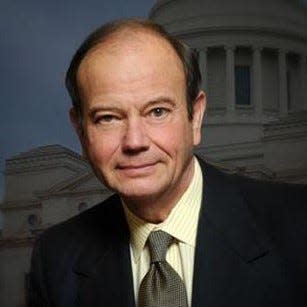One million and counting | Steve Barnes

Only days ago, as surely you have read or heard, the U.S. recorded its millionth fatality from COVID-19. But while that “morbid milestone,” as one medical statistician described it, was officially reached on May 17, most experts believe the actual millionth COVID death occurred weeks, perhaps months earlier. The underreporting and misdiagnoses that invariably accompany mass disease outbreaks, they say, almost certainly have helped misstate the gravity of the pandemic that still threatens the nation and the world.
"Hundreds of thousands more people have died from COVID-19 in the U.S. than are officially counted," asserts the U.S. Centers for Disease Control and Prevention. Almost seven million deaths around the planet are ascribed to the novel coronavirus, but the World Health Organization contends the number of deaths from COVID, or directly attributable to it, exceeds 15 million.
So with slightly more than 4% of the world’s population, the U.S. has 16% of confirmed COVID-19 deaths. And Arkansas, with about 378 COVID deaths per 100,000 population, is the eighth highest in the nation. Not enviable numbers, obviously.
It is perfectly terrible that the number of COVID cases in Arkansas is steadily increasing and that more of our citizens are dying of it. It is also perfectly predictable and just as easily understandable.
Not since early March have the numbers been as concerning and the rate of increase so ominous. Data from the Arkansas Department of Health tell the story: Double-digit daily increases in the active case count, up almost 650 in the week ended last Sunday to a 10-week high of 3,227. In the same period, newly diagnosed cases rose to nearly 2,000.
More: Hospitalizations, very expensive, up. Intensive care hospitalizations, extremely expensive, up. Deaths, many if not most of them needless, up.
There is no mystery attached. Indeed, clinicians from every facility in the state, from each of its corners and counties, at varying levels of exhaustion, have cautioned that COVID-19 is not done with the world, the country, or Arkansas. They have recommended, urged, begged and pleaded with their fellow citizens to ignore the rantings of the political right and their allies on the medical fringe, to disregard the Bill Gates-George Soros-Anthony Fauci conspiracy theories, to stay clear of ivermectin and hydroxychloroquine, and to not drink their own urine (not a misprint), and to instead roll up their sleeves and accept vaccines that have proved effective at either preventing infection or greatly reducing its ferocity. Vaccines with minor side effects, with no associated morbidity, and which produce reactions that typically disappear within two days, if not two hours.
The doctors have had some success but not as much as they wish. Consider some sample counties.
With more than 42,000 residents, almost 9,000 aggregate confirmed cases and 248 deaths, one might image Baxter County would be hyper-aware of the need for immunization. (In comparison to some other Arkansas counties, it is.) But less than half its population has been fully vaccinated, and only about 20% have received at least one of the recommended booster shots.
Sebastian County: After almost 33,000 recorded cases, more than 500 of them lethal, barely half its 128,000 residents have been fully inoculated and fewer than one in five have taken a booster. The percentage of its 65-and-older population with full immunization is substantially better – about 72% – but the falloff in terms of boosters is notable; fewer than half have received even one dose. The immunization profile in Crawford County, just across the line to the north, is a near-mirror image of Sebastian County.
To the Delta: More than 7,000 of the 26,000 folks in St. Francis County have at one time or another contracted COVID-19, and almost 100 of them have died. And while about 90% of its older residents have taken the recommended protocol, only about half the county’s total population are fully immunized, and a like percentage of its seniors have yet to get a booster. Similar numbers are recorded in and around Marianna, in next-door Lee County.
At the Delta’s eastern edge, a bit closer to central Arkansas, half of Lonoke County’s 74,000 residents have taken the jab, and while its 65-plus population scores an 81% vaccination rate – one of the highest in the state – only 50% of them have availed themselves of the booster.
Nationwide, two-thirds of the eligible population has been fully immunized. Arkansas lags at about 55% and it shows, with about 11,500 deaths. About that, two things to note: It appears that approval for vaccination of youngsters five and under is imminent, and a new Gallup Poll finds that fully one-third of U.S. adults, many of them parents to that demographic, believe the pandemic is over.
Shudder.
Steve Barnes is the host of "Arkansas Week" on Arkansas PBS.
This article originally appeared on Fort Smith Times Record: One million and counting | Steve Barnes
